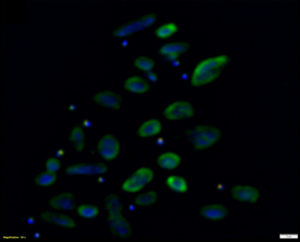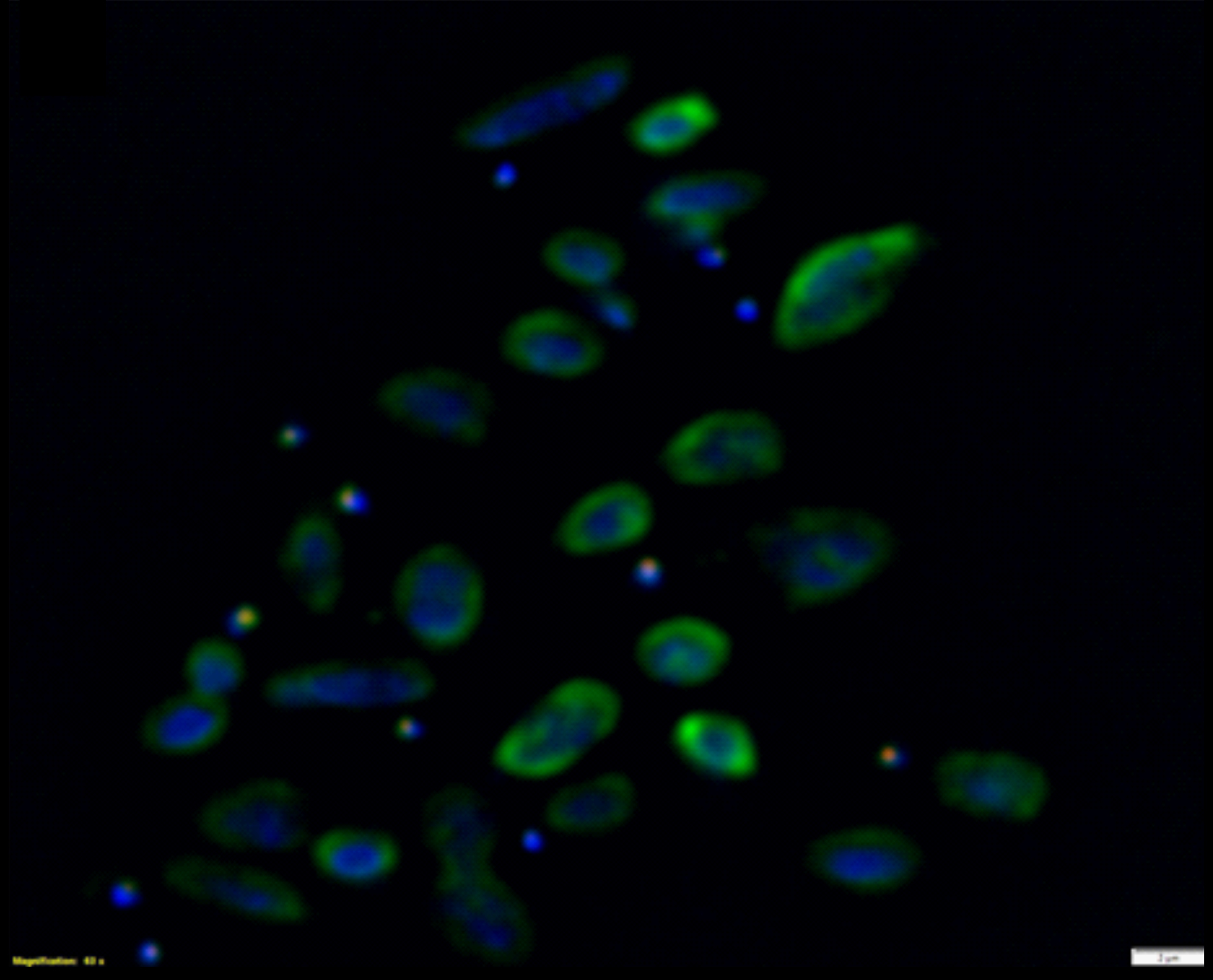
FISH of Nha-C enrichment with Hrr. lacusprofundi ACAM34-hmgA. Fluorescence micrograph shows individual Nha-C cells amongst Hrr. lacusprofundi cells. Nha-C cells labelled with a Cy5 (red fluorescence) conjugated probe; Hrr. lacusprofundi cells labelled with a Cy3 (yellow fluorescence, recolored to green to improve contrast) probe; all nucleic-acid containing cells stained with DAPI (blue fluorescence). Composite image of all three filters. Scale bars represent 2 µm. (Josh Hamm, UNSW)
Symbiotic relationships are long-term biological interactions between one or more biological organisms. Nanohaloarchaea are part of the DPANN superphylum of extremophilic archaea first outlined by JGI scientists and their collaborators in 2013. While most DPANN lineages are predicted symbionts, the Nanohaloarchaeota were predicted to be capable of autonomous growth because they had larger genome sizes and their cells were not observed to associate with host cells.
In the Proceedings of the National Academy of Sciences, a team led by Rick Cavicchioli at the University of New South Wales along with researchers at the Joint Genome Institute (JGI) experimentally demonstrated that Nanohaloarchaeota are not free-living archaea but rather symbionts. Click here to read the JGI science highlight.




